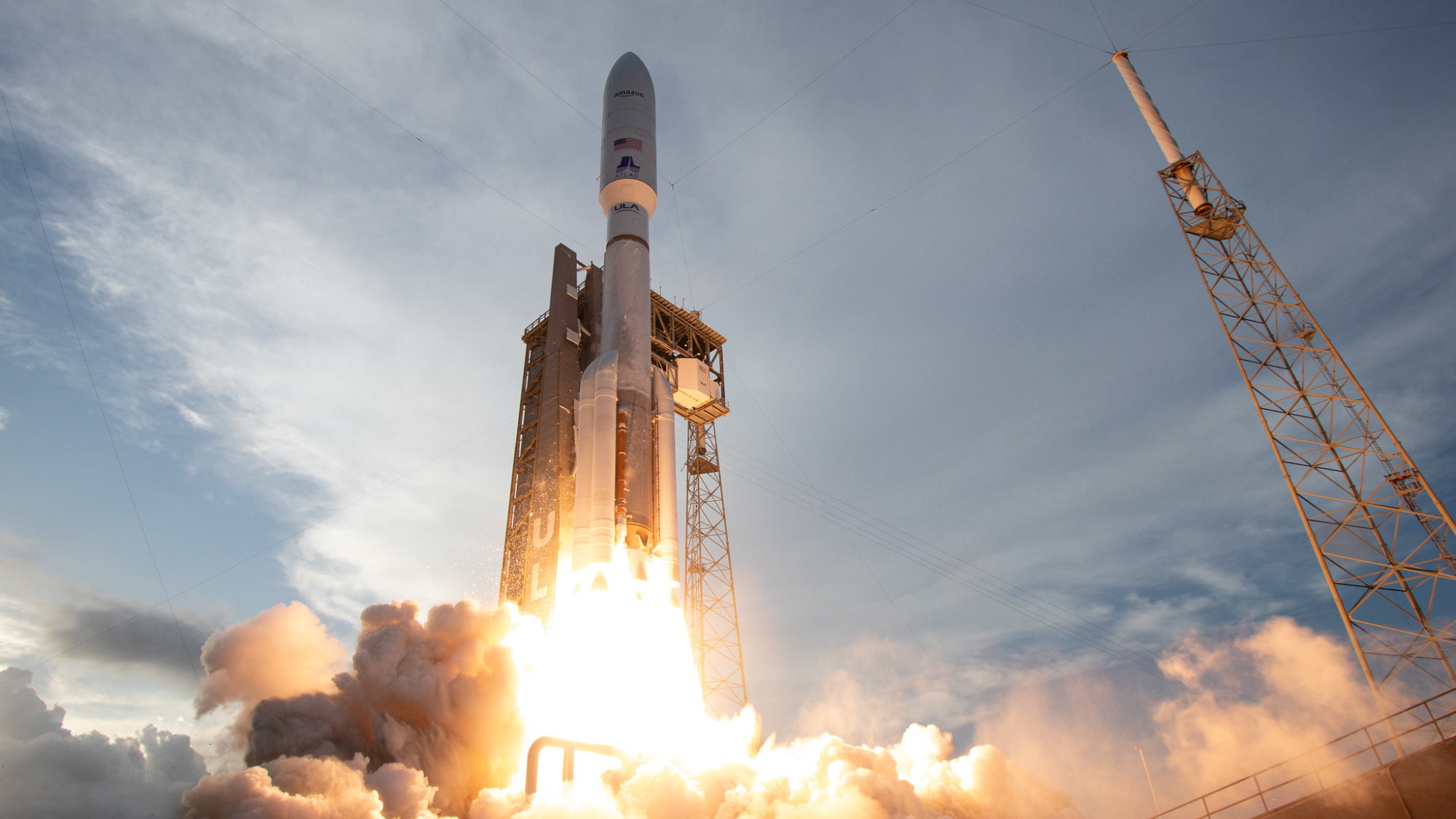Atlas V rocket to launch Amazon’s 2nd batch of Kuiper internet satellites on June 13
The mission will loft 27 more spacecraft to orbit.

Amazon's second fleet of internet satellites now has a target launch date.
The stack of 27 satellites, part of Amazon's Project Kuiper constellation, is scheduled to launch on a United Launch Alliance (ULA) Atlas V rocket next Friday (June 13).
Liftoff of the mission, known as Kuiper 2, is set for 2:29 p.m. EDT (1829 GMT), from Space Launch Complex-41 at Cape Canaveral Space Force Station in Florida, ULA announced.
Atlas V will launch the Kuiper satellites into low Earth orbit (LEO), where they will maneuver to join a small but growing constellation of satellites that will offer wireless, high-speed internet to customers within the fleet's range of operation.
The delivery of the Kuiper 2 satellites will double the size of Amazon's current constellation, to 54.
ULA launched the Kuiper 1 mission on April 28. The company called it a "new beginning" in a May 28 post that hinted that the launch date for Kuiper 2 was nearing.
Kuiper missions 1 and 2 are the first of 83 planned launches to help grow Amazon's Kuiper constellation. Not all of them will fly on the Atlas V, however; Amazon plans to launch batches of Kuiper satellites aboard ULA's new Vulcan Centaur rocket, Arianespace's Ariane 6 and Blue Origin's New Glenn.
Get the Space.com Newsletter
Breaking space news, the latest updates on rocket launches, skywatching events and more!
The Project Kuiper constellation will eventually harbor more than 3,200 satellites, if all goes according to plan. That will still be far fewer than SpaceX's rival Starlink broadband constellation, which already provides service to customers around the world. Starlink currently consists of more than 7,600 operational satellites, and it's growing all the time.
But Amazon's internet architecture differs from that of Starlink, so the company may not need to rival SpaceX in sheer satellite numbers to provide comparable service. Project Kuiper will combine its LEO constellation with a global network of ground stations and on-Earth infrastructure running Amazon Web Services, according to Amazon's website.
The engineers of Project Kuiper are also focused on sustainability. Kuiper satellites are designed to minimize the risk of orbital debris, the company says. They are also working with astronomers on ways to reduce the satellites' visibility and interference with astronomical research and general stargazing.
In a post on X announcing the Kuiper 2 launch date, ULA indicated that the mission was still pending range approval. The June 13 launch window for Atlas V opens at 2:29 p.m. EDT (1829 GMT) and will last for 30 minutes. If it's available, Space.com will stream the ULA launch for Amazon on our homepage, beginning shortly before liftoff.
Join our Space Forums to keep talking space on the latest missions, night sky and more! And if you have a news tip, correction or comment, let us know at: community@space.com.

Josh Dinner is the Staff Writer for Spaceflight at Space.com. He is a writer and photographer with a passion for science and space exploration, and has been working the space beat since 2016. Josh has covered the evolution of NASA's commercial spaceflight partnerships and crewed missions from the Space Coast, as well as NASA science missions and more. He also enjoys building 1:144-scale model rockets and human-flown spacecraft. Find some of Josh's launch photography on Instagram and his website, and follow him on X, where he mostly posts in haiku.
You must confirm your public display name before commenting
Please logout and then login again, you will then be prompted to enter your display name.
